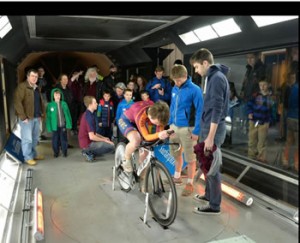It’s an award winning event which shows how science shapes our world, from the importance of bacteria to discoveries in the solar system. This year’s Science and Engineering Festival has so far attracted more than 3000 people. The coordinator, Zena Hilton talks to e-Voice about how she got the show on the road and looks ahead to Ocean and Earth Day at the end of April.
Q. Can you give us your personal perspective about being behind the scenes of such a large project?
The Southampton Science and Engineering Festival is focused around two key events: Science and Engineering Day and Ocean and Earth Day. The festival, which is part of British Science Week, includes two free public open days – Science and Engineering Day which took place on Saturday 14 March and Ocean and Earth Day which is on Saturday 25 April.
I coordinated the advertising for the festival as a whole and project managed the Science and Engineering Day itself. On the day, there were more than 80 shows, tours and activities for all ages including wearable technologies; the health of your home; landslides; the secrets of animal bones; virtual musical instruments; stem cells; knee replacements; memory loss; immune cells and much more.
Science and Engineering Day is the largest event I have ever worked on and is not something that you can do by yourself! There are many staff and students that have a great deal of experience working on the day, so building up a relationship with them, especially in the early planning stages was essential.
Q. What was different about the event this year?
A. For the first time, the planning for the festival is being looked at over a three-year period, instead of year-on-year. We refreshed the marketing to better reflect the aim of the festival which is to educate and inspire people. Developing a social media presence has helped to broaden the geographic reach of the event and build it up as a regional science festival.
Q. What was the University keen to promote in particular this year?
A. The main thing was to try to find a balance of new activities and popular activities from previous years, rather than highlighting anything in particular. Also ensuring that contributions came from a broad range of faculties and academic units was key.
As 2015 is the International Year of Light, there was the chance to explore the fibre-drawing towers and clean rooms, which produce the optical fibres that power the Internet and power global communication networks.
2015 is also the centenary of Einstein’s Theory of General Relativity, so there were mathematics activities related to this, including a lecture on the Science of Stephen Hawking.
Q. What were some of the favourite events this year?
A. Tours of the RJ Mitchell wind tunnel, where Britain’s Olympic athletes conducted testing ahead of their Gold medal success. Other favourites were the Laser Light Express, Ian B Dunne’s Science Magic show, and a whole range of hands-on activities.
 Q. Why is this event significant to the University?
Q. Why is this event significant to the University?
A. Science and Engineering Day is a real celebration. Staff and students work together to showcase what we do to educate and inspire the wider public, especially young people.
Q. How does this event link with connectivity?
A. Science and Engineering Day is a “connected” event in various ways. Staff and students work together to make the day possible and those that attended were staff, students, alumni and members of the public. This year, Lloyds Register and Southampton City Council also led activities.
Q. How will you measure the success of the fair?
A. In addition to keeping track of visitor numbers, social media has provided almost instant feedback this year, and it is interesting to hear how much people enjoyed the event, whether for the first time or for the fourth time
Ocean and Earth Day is on the 25 April at the National Oceanography Centre and runs from 10:30 to 16:00. You can find more information here.